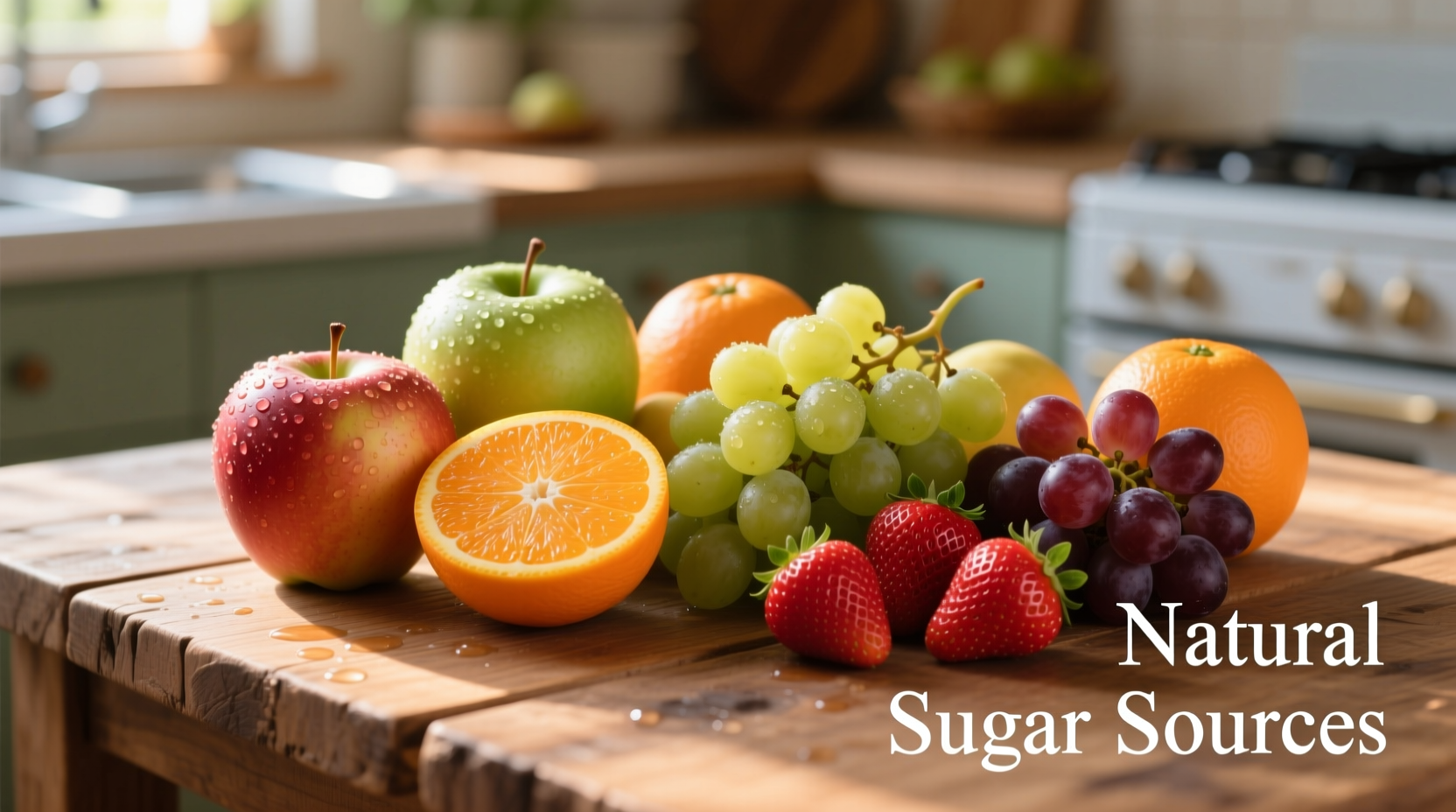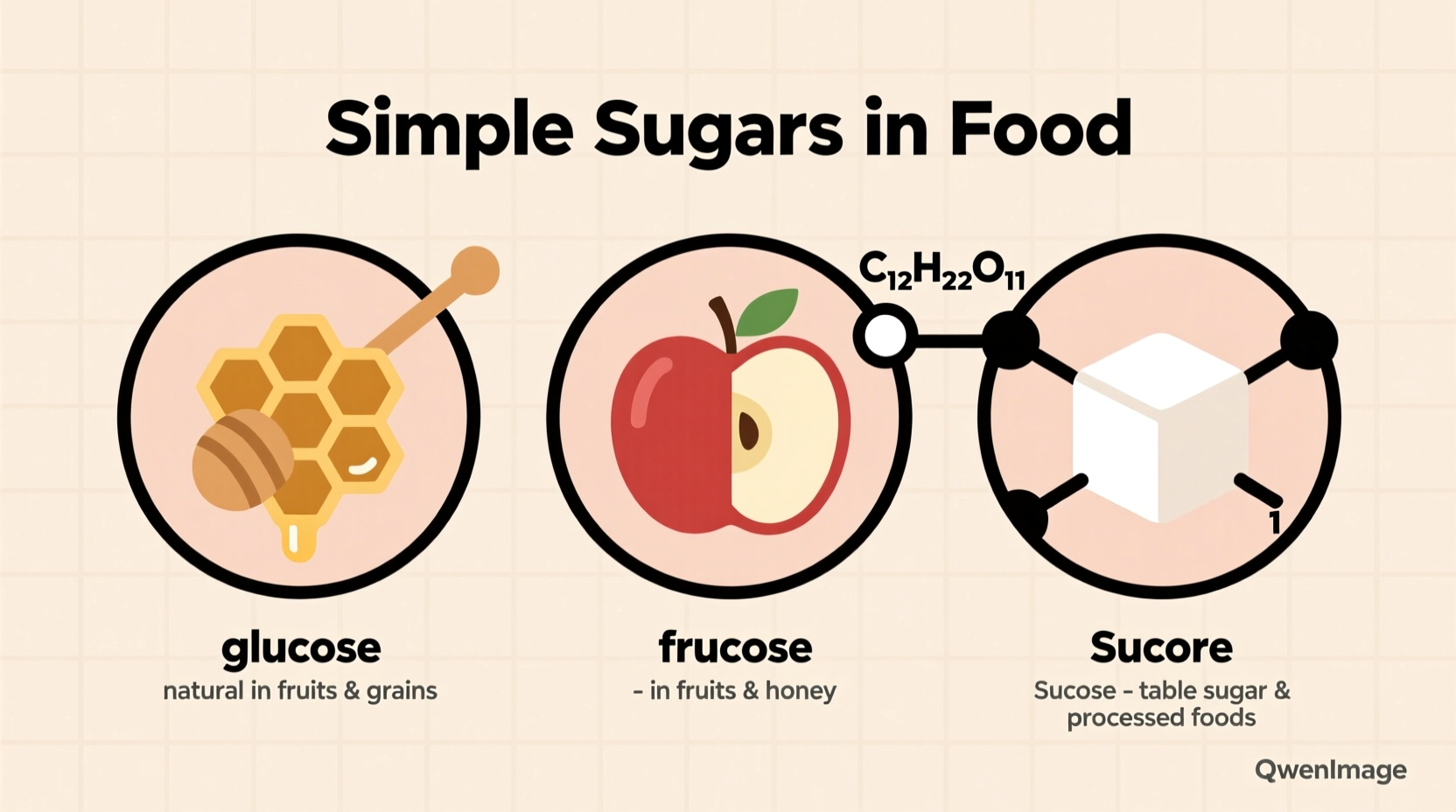Simple sugars in food are basic carbohydrates composed of one (monosaccharides) or two (disaccharides) sugar molecules, including glucose, fructose, galactose, sucrose, lactose, and maltose. They occur naturally in fruits, dairy, and some vegetables, and are also added to processed foods. Understanding these sugars helps make informed dietary choices about natural versus added sugars.
When you search what are simple sugars in food, you're looking for clear, science-backed information to navigate nutrition labels and make healthier choices. This guide explains exactly what simple sugars are, where they appear in your diet, and how to balance them for optimal health—without confusing jargon or diet fads.
Simple Sugars Defined: The Building Blocks of Sweetness
Simple sugars represent the most basic form of carbohydrates, broken down rapidly by your body for quick energy. Unlike complex carbohydrates (starches and fiber), which contain long chains of sugar molecules, simple sugars consist of just one or two units:
- Monosaccharides (single sugar units): Glucose, fructose, and galactose
- Disaccharides (two sugar units bonded together): Sucrose (glucose + fructose), lactose (glucose + galactose), and maltose (glucose + glucose)
According to the National Institutes of Health, these simple structures allow for immediate absorption in your digestive system, causing faster blood sugar spikes compared to complex carbs.
| Type | Chemical Composition | Natural Food Sources |
|---|---|---|
| Glucose | Single molecule (monosaccharide) | Fruits, vegetables, honey |
| Fructose | Single molecule (monosaccharide) | Fruits, honey, agave |
| Sucrose | Glucose + fructose (disaccharide) | Sugar cane, sugar beets, fruits |
| Lactose | Glucose + galactose (disaccharide) | Milk, yogurt, cheese |
Natural Simple Sugars vs. Added Sugars: Why the Distinction Matters
Not all simple sugars affect your body the same way. The critical difference lies in whether they occur naturally in whole foods or are added during processing:
Natural Simple Sugars
Found in nutrient-dense foods like:
- Fruits (fructose and glucose in apples, berries, oranges)
- Dairy products (lactose in milk and yogurt)
- Some vegetables (glucose and fructose in sweet potatoes, beets)
These come packaged with fiber, vitamins, and minerals that slow sugar absorption and provide nutritional benefits. As the 2020-2025 Dietary Guidelines for Americans note, whole fruits contribute to healthy eating patterns despite containing simple sugars.
Added Simple Sugars
These are incorporated during food processing and include:
- Table sugar (sucrose)
- High-fructose corn syrup
- Honey and maple syrup (despite "natural" marketing)
- Coconut sugar
The Centers for Disease Control and Prevention reports that Americans consume about 17 teaspoons of added sugars daily—far exceeding the American Heart Association's recommendation of 6 teaspoons for women and 9 for men.

How Simple Sugars Impact Your Health: Context Matters
Simple sugars aren't inherently "bad"—their health impact depends on context:
When Simple Sugars Serve a Purpose
- During intense exercise: Glucose provides immediate fuel for muscles
- For hypoglycemia treatment: Quickly raises dangerously low blood sugar
- In whole food form: Fruits and dairy offer nutrients alongside sugars
When to Limit Simple Sugars
- From processed foods with minimal nutritional value
- When consumed in excess of daily recommendations
- For individuals managing diabetes or insulin resistance
The U.S. Food and Drug Administration now requires "Added Sugars" to appear on nutrition labels, helping consumers distinguish between natural and added simple sugars—a significant evolution from previous labeling standards that didn't differentiate sugar types.
Practical Guide: Identifying Simple Sugars in Your Diet
Follow these steps to make informed choices about simple sugars:
Step 1: Read Nutrition Labels Strategically
- Check both "Total Sugars" and "Added Sugars" lines
- Scan ingredients for hidden simple sugars (look for words ending in "-ose")
- Be aware of alternative names: evaporated cane juice, malt syrup, rice syrup
Step 2: Recognize Whole Food Sources
Foods containing natural simple sugars typically have shorter ingredient lists and recognizable components. An apple contains fructose but also fiber, water, and vitamins—unlike apple-flavored candy which delivers only added sugars.
Step 3: Balance Your Intake
Pair foods containing simple sugars with protein, healthy fats, or fiber to slow absorption. For example, eat an orange instead of drink orange juice, or pair a small serving of dark chocolate with almonds.
Making Smart Choices Without Deprivation
You don't need to eliminate all simple sugars—just make informed decisions:
- Choose plain yogurt and add fresh berries instead of flavored varieties
- Satisfy sweet cravings with fruit-based desserts
- When using added sugars, opt for smaller quantities of higher-quality options
- Be mindful of "healthy" sweeteners like honey and maple syrup—they're still added simple sugars
Remember that individual needs vary based on activity level, health status, and personal goals. The key is understanding what simple sugars are in food so you can make choices aligned with your nutritional requirements.











 浙公网安备
33010002000092号
浙公网安备
33010002000092号 浙B2-20120091-4
浙B2-20120091-4